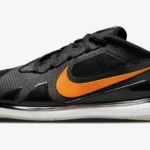A tiebreak is used as a unique game. Players begin the tiebreak when a set score is equal at six games each, and the set is won by the first person to reach seven points. If the score is tied at 6-6, the first player to score a 2-point margin is the winning player, capturing the set by 7 games to 6 (7-6).

Tennis fans have been riveted by several outstanding matches and moments during the past 10 years. One of the more notable tie-break sets occurred in a singles match in 2010 at Wimbledon. The American John Isner and the Frenchman Nicolas Mahut faced off in a first-round battle. Isner, who was then ranked 19th in the world, should have had an easy victory based on the numbers.
But what came next was the longest match in history. The American was the eventual winner of a match after more than eleven hours with a score of 70:68 in the deciding set. It is worth noting a new rule was introduced in 2022 and first implemented at the French Open which now sees a 10-point tiebreaker to decide all final sets that reach six games all so we will not see the likes of this game of tennis again.
Every point counts far more during a tiebreaker than it does throughout a game. In essence, it’s a unique game created to end a tie in a tennis match and the player with greater consistency will prevail. This is a shorter method of deciding sets and matches to prevent events like the Isner-Mahut showdown.

Rules for Tennis Tie-Breaks
The rules are simple.
The right to begin the tiebreak serving from the right side of the court (also known as the deuce court) belongs to the player who returned service in the last game of the set. After the opening point, the serve is switched, and the opposing player gets two serves, the first of which is from the court’s left side. When the total of the points is unequal, the serve is always changed. Players change sides every six points. However, they are not permitted to sit down during this transition. They are only permitted to go across and, if necessary, take a sip of their drinks.
A mini-break is a point scored by a different player than the one who is serving. During a tie-break, a mini-break is often taken as the momentum swings back and forth.
The longest tiebreak ever
This was not at one of the grand slams, instead, it was at a Futures Tournament in Plantation, where history took place. In the second round of qualifying, Guillaume Couillard was beaten by Benjamin Balleret in a 70-point tiebreak, 7:6 (36:34), 6:1. The match score was confirmed by the ITF and ATP despite the absence of line judges or a chair umpire.

The Longest Tiebreak in ATP History!
The longest tour-level singles tie-break in ATP Tour history (since 1990) was contested between Reilly Opelka and John Isner. Opelka won 24-22 to beat Isner 7-6(7), 7-6(22) and earn a place in the Dallas Open championship match.
Super Tiebreak
What is a super tiebreak (also known as a super tiebreaker) in tennis, how is it played, and what are the rules?
Similar to other tiebreaks, a super tiebreak is played to 10 points rather than the typical seven. Super tiebreaks are however also known as 10-point tiebreaks.
This happens at the Grand Slam tournaments in a tie during the fifth set of men’s singles matches and during the third set of women’s, or as a third set on every doubles match when it is one set all. As mentioned before it is to make sure that matches do not take days to finish!

Players with the most tie-breaks wins on ATP tour
One of the most recognizable tennis players is the American superstar John Isner. John Isner has had a fantastic 16-year career and several records to his credit, including a devastating serve, opponents found it nearly impossible to break his service games.
Isner set a record-breaking milestone by winning the 500th tie-break in ATP history during the current Dallas Open quarterfinal match against Emilio Gomez. Isner prevailed 7-6(8), 7-5. Out of the 819 tie-breaks he has played, Isner has already won 500 of them. It is no wonder Isner has such an incredible record, just look at his ace count here What is an ace in tennis? 2023 – tennis pursuits
The legendary Roger Federer of Switzerland was the first player in the Open Era to win 20 Grand Slam championships, and the former World No. 1 is closely followed by him in terms of tiebreak victories. Federer has accomplished several milestones throughout his 24-year career, and his tie-break victory record is one of them. He has participated in a total of 713 tie-break games, winning 466 of them, placing him second only to John Isner in terms of tie-break victories.
Tie-break history
James H. Van Alen, an American philanthropist, invented the tie-break.
Early in the 1950s, he suggested that his Van Alen Streamlined Scoring System (VASSS) be used to cut the length of tennis matches that were frequently won by strong servers on fast surfaces, particularly grass. The VASSS nine-point “tiebreaker“ or “breaker,“ as Van Alen liked to call it, required that a player reach five points to win a set. A sudden-death point was played when the score was 4-4, and the receiver got to choose which court to receive from.
A different version of VASSS was utilized for two professional tournaments in America in 1955 and 1956. 15, 30, 40, and the game was changed with table-tennis style scoring (first to 21 points), but it was abandoned because both players and spectators felt that the drama had been gone.
However, utilizing the VASSS nine-point sudden death scoring system, Van Alen held an invitational professional event on the grass at the Newport Casino, which hosted the US Championships in its early years, in 1965. He would stand alongside the court and wave a red VASSS flag to mark the start of a tie-break when a set was tied at six games apiece. He was quite charismatic.
Billy Talbert, a former US doubles expert, served as the tournament director for the US Open in 1970. For the following five frenetic years at Forest Hills, red flags were displayed on the umpire’s chair anytime a set reached six games, all after he decided to use sudden-death scoring. While athletes hated sudden death, fans enjoyed it. For all sets at the US Open from 1975 to the present, the 13-point tie-break (first to seven or first to lead by two points after 6-6) was implemented.
FAQs
Are tiebreaks used in all tennis tournaments?
Yes, tiebreaks are commonly used in various tennis tournaments to determine set winners.
What happens if the score in a tiebreak reaches 6-6?
If the score reaches 6-6, players continue to play until one player wins by a margin of two points.
Can players request coaching during a tiebreak?
Coaching is generally not allowed during a tiebreak, as it is considered part of the ongoing set.
How many points does a player need to win a tiebreak?
A player needs to win at least seven points, with a minimum margin of two points, to win a tiebreak.
Are there any players known for their exceptional tiebreak performance?
Yes, several players have earned reputations for their outstanding tiebreak skills, often displaying nerves of steel in crucial moments. John Isner, Pete Sampras, and Roger Federer have some of the best win records in tiebreaks.
Final Thoughts
In many ways, the tiebreak has been a fantastic invention for the game of tennis. It increases the excitement since every point matters. If, for example, one of the top players has a few terrible moments and makes too many unforced errors, it can also result in unexpected outcomes and shocks. Additionally, it benefits players who serve well, since “mini-breaks” are necessary to win a tiebreak. Given it is a short format, mental resilience, good concentration, and a strong desire come into play in a big way; players must be in the zone from the first point.





Comments are closed.